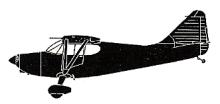
ASN Wikibase Occurrence # 34524
This information is added by users of ASN. Neither ASN nor the Flight Safety Foundation are responsible for the completeness or correctness of this information.
If you feel this information is incomplete or incorrect, you can submit corrected information.
| Date: | Wednesday 22 October 2008 |
| Time: | 22:05 |
| Type: |  Stinson 108-1 |
| Owner/operator: | Private |
| Registration: | N97946 |
| MSN: | 108-946 |
| Engine model: | Franklin 6A4-150-B3 |
| Fatalities: | Fatalities: 1 / Occupants: 3 |
| Aircraft damage: | Substantial |
| Category: | Accident |
| Location: | 5.2 mls WSW of Concrete Municipal Airport, WA -
 United States of America United States of America
|
| Phase: | Initial climb |
| Nature: | Private |
| Departure airport: | Concrete, WA (3W5) |
| Auburn, WA (S50) | |
| Investigating agency: | NTSB |
| Confidence Rating: |
For 7 years, the pilot had performed maintenance, which included 100-hour and annual inspections of his airplane's engine. On an undetermined date, a rope-like material had been placed between the exhaust's heater shroud and muffler. At an undetermined date/time, this material became separated from its installed location. During takeoff on the accident flight, the rope-like material became lodged in the carburetor's air intake. This resulted in restricting the flow of air into the carburetor, and the engine lost power. It was a dark night, and the airplane collided with trees during the ensuing forced landing. Toxicology results were consistent with the relatively recent use of diphenhydramine, an over-the-counter antihistamine with sedative and impairing effects, and propoxyphene, a prescription narcotic medication with impairing effects. The levels detected on toxicology evaluation were not consistent with impairment at the time of the accident. The pilot had indicated to the FAA a history of diabetes and kidney stones, but not the use of diphenhydramine or propoxyphene, and it could not be determined whether medical conditions or the use of medication may have played a role in his decision to insert the rope-like material in the engine compartment.
Probable Cause: The loss of engine power during initial climb due to the pilot's improper exhaust system maintenance, which resulted in restriction of the carburetor's air intake.
Accident investigation:
 |
|
Sources:
NTSB
Location
Images:

(c) NTSB

(c) NTSB
Revision history:
| Date/time | Contributor | Updates |
|---|---|---|
| 04-Sep-2009 02:54 | harro | Updated |
| 04-Sep-2009 02:55 | harro | Updated |
| 03-Dec-2017 12:09 | ASN Update Bot | Updated [Time, Operator, Other fatalities, Departure airport, Destination airport, Source, Narrative] |
Corrections or additions? ... Edit this accident description
The Aviation Safety Network is an exclusive service provided by:


 ©2024 Flight Safety Foundation
©2024 Flight Safety Foundation